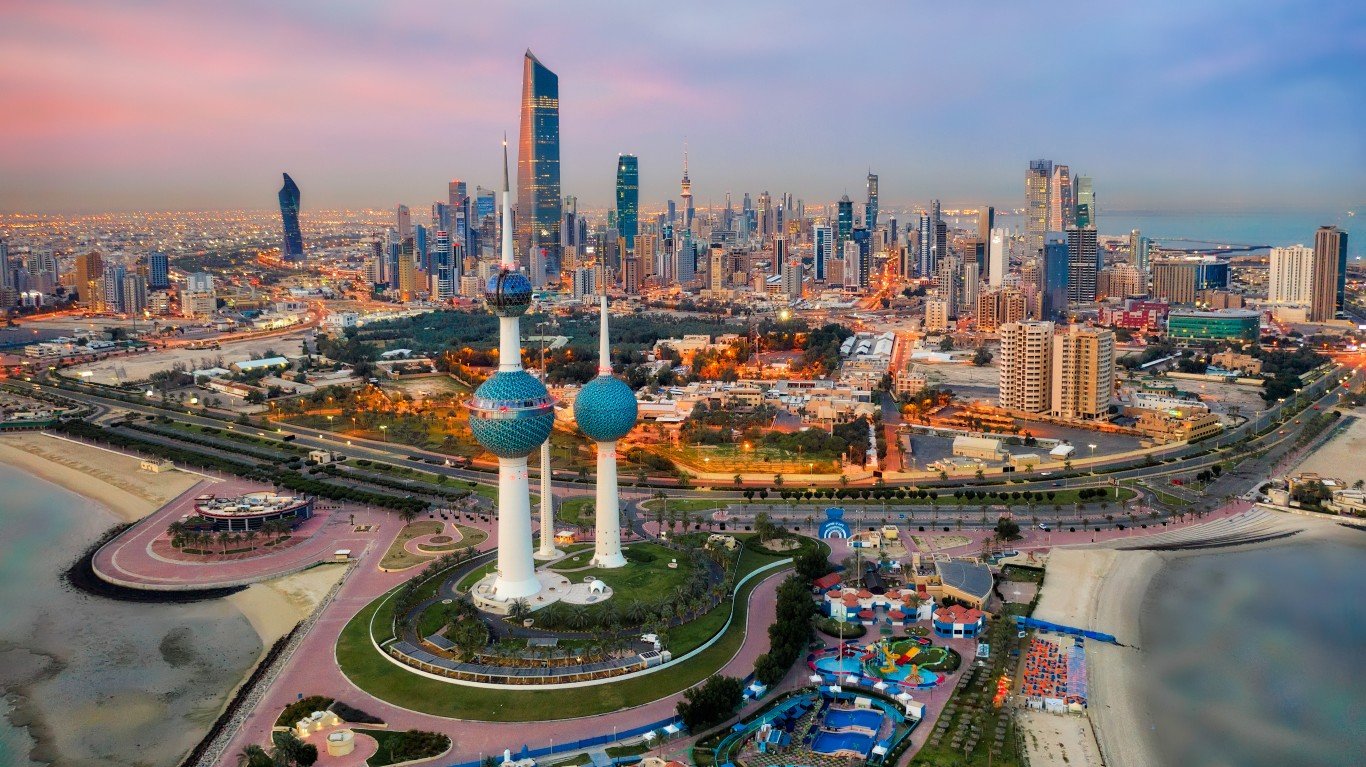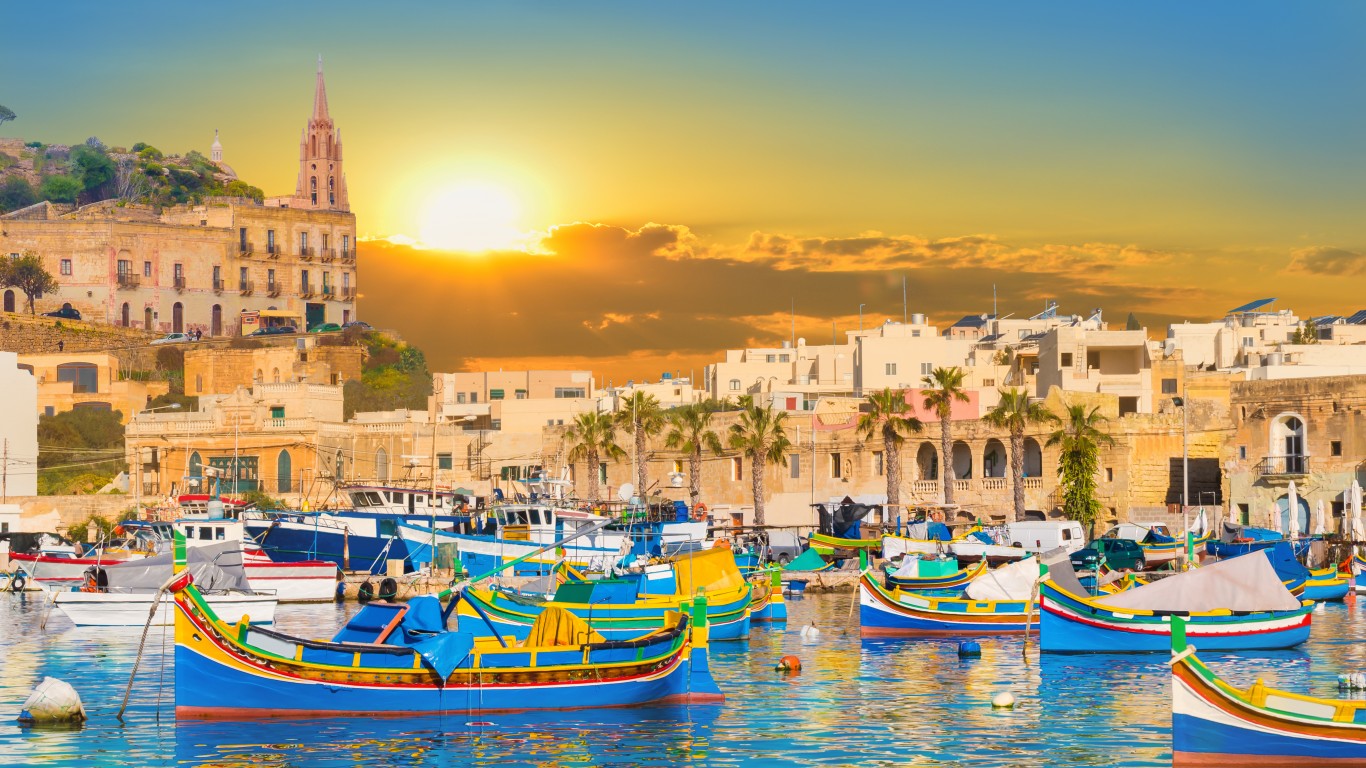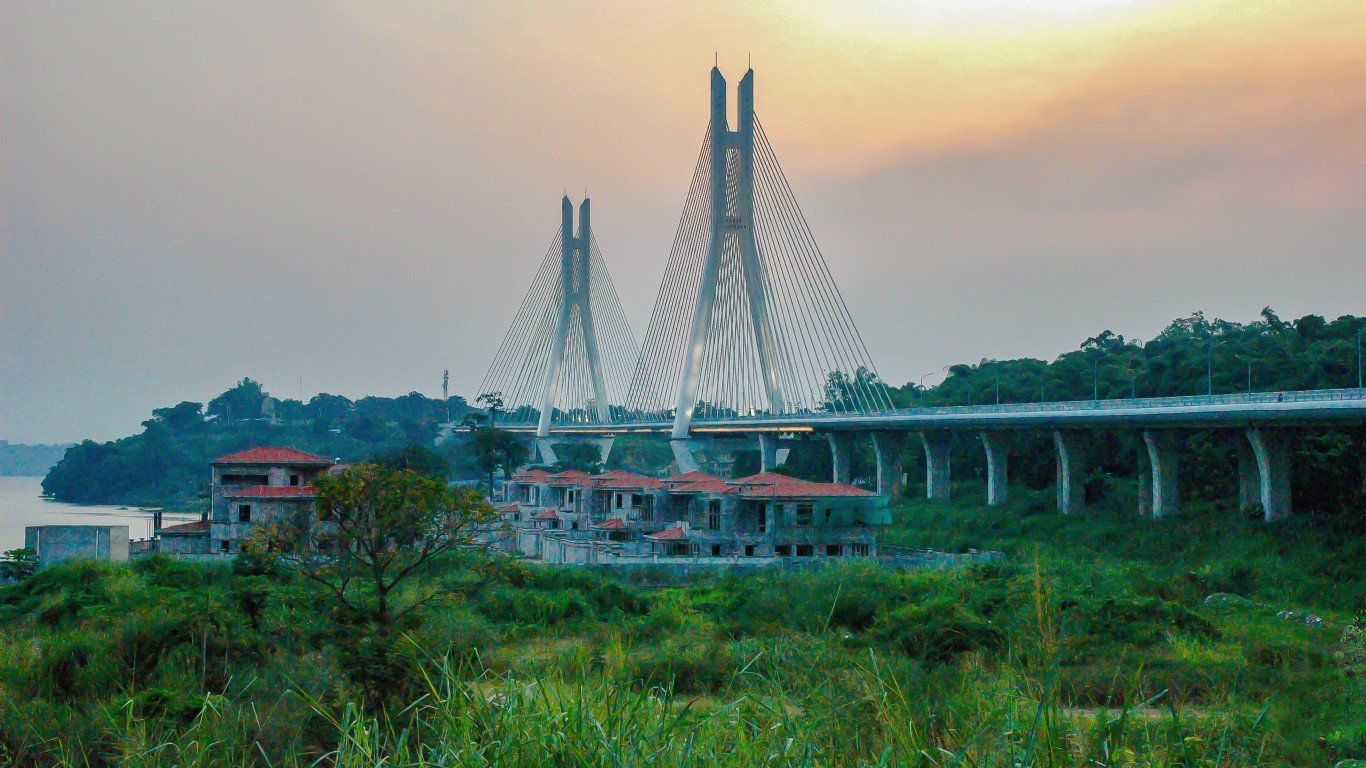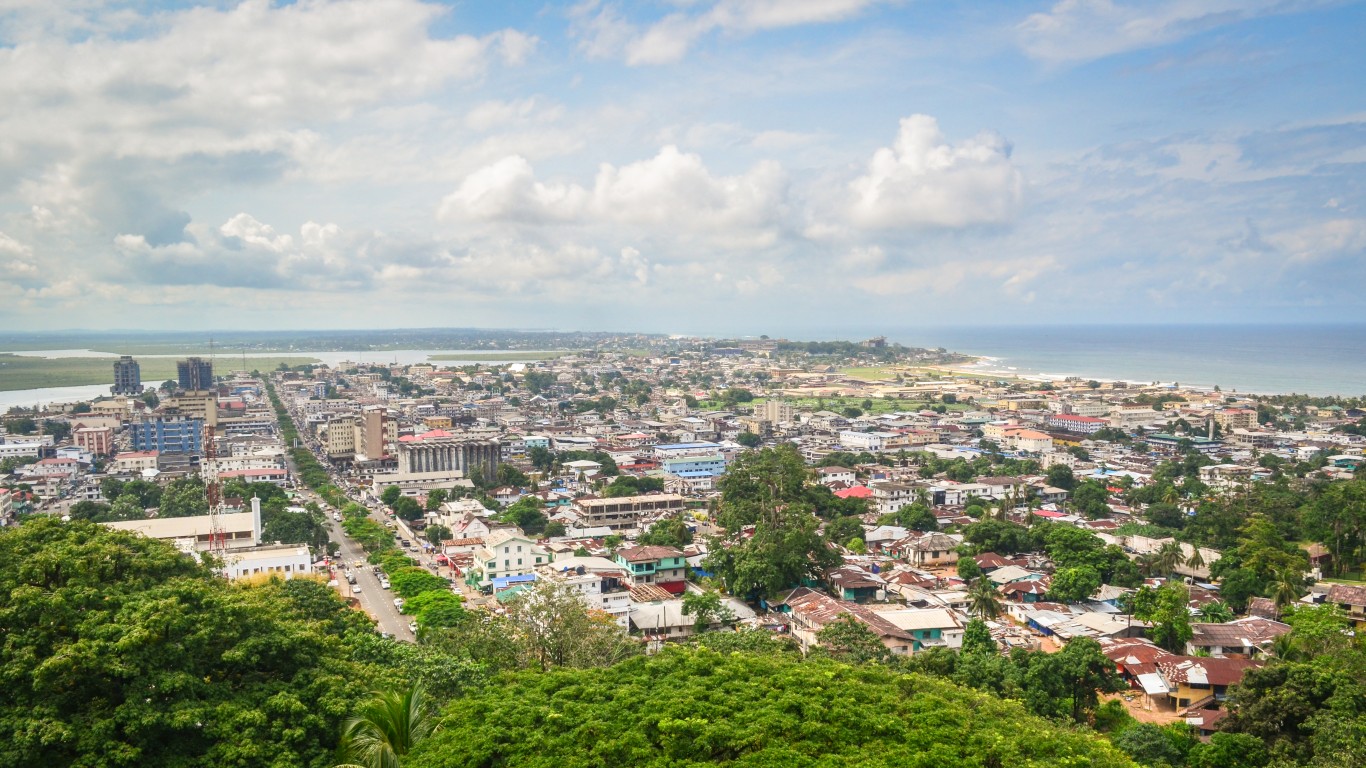
10. Kuwait
> Value of oil trade: 17.4% of GDP
> Oil exports, 2020: $34.8 billion
> Oil imports, 2020: $356.9 million
> GDP, 2020: $202.0 billion
> Total population: 4.3 million
Tiny Kuwait, invaded by Iraq in 1990, has an estimated 94 billion barrels of proven oil reserves, or 9% of the world’s total. The oldest and largest of Kuwait’s oil fields is the Greater Burgan field in southeastern Kuwait, which produces about 1.6 million barrels of oil a day. The nation has a current production capacity of about 3.15 million barrels per day. The Kuwait Petroleum Corp. said it intends to increase oil production capacity to 4.75 million barrels a day by 2040. The top exports of Kuwait are crude petroleum, refined petroleum, petroleum gas.

9. The Bahamas
> Value of oil trade: 19.1% of GDP
> Oil exports, 2020: $393.8 million
> Oil imports, 2020: $2.0 billion
> GDP, 2020: $12.8 billion
> Total population: 393,248
According to a recently released report from the Inter-American Development Bank the Bahamas is the biggest importer in the Latin American and Caribbean region of gas and oil from Russia, as a percentage of the island nation’s total imports. The country’s portion of total imports from Russia is 2.6%, all of it oil and gas.The data was based on 2019 figures. The top export and import in the Bahamas is refined petroleum.
In other oil news pertaining to the Bahamas, in February, Challenger Energy Group, the former Bahamas Petroleum Co., said the Bahamas will only play a minor role in its operations for the foreseeable future after its first exploratory well failed to strike oil.

8. Malta
> Value of oil trade: 19.6% of GDP
> Oil exports, 2020: $408.7 million
> Oil imports, 2020: $3.9 billion
> GDP, 2020: $21.9 billion
> Total population: 525,285
Malta, an island nation south of Sicily in the Mediterranean Sea, has become a major transhipment point — including oil — since about the mid-1980s. Malta and Tunisia have had discussions in the past about oil exploration on the continental shelf between their two countries. Offshore exploration began in the 1970s but no commercial discovery has been made. The top import of Malta is refined petroleum.

7. Republic of the Congo
> Value of oil trade: 20.2% of GDP
> Oil exports, 2020: $3.9 billion
> Oil imports, 2020: $92.3 million
> GDP, 2020: $20.0 billion
> Total population: 5.5 million
The African nation, which became an OPEC member in 2018, has 2.9 billion barrels of proven crude oil reserves. It is the sub-Saharan region’s third-largest oil producer after Nigeria and Angola. Congo has a production capacity of 336,000 barrels per day. The top export of the Republic of the Congo is crude petroleum.

6. Liberia
> Value of oil trade: 20.3% of GDP
> Oil exports, 2020: $9.5 million
> Oil imports, 2020: $1.5 billion
> GDP, 2020: $7.4 billion
> Total population: 5.1 million
The Liberian tanker fleet became the world’s largest in the fall of 2021 in terms of gross tonnage. The fleet’s size is 57.4 million in gross tonnage. The Liberian government is also encouraging exploration of oil within the country. The Liberia Petroleum Regulatory Authority, along with the National Oil Company of Liberia, has offered 33 offshore blocks in two basins to oil companies. The top import of Liberia is refined petroleum.

 24/7 Tempo
24/7 Tempo




